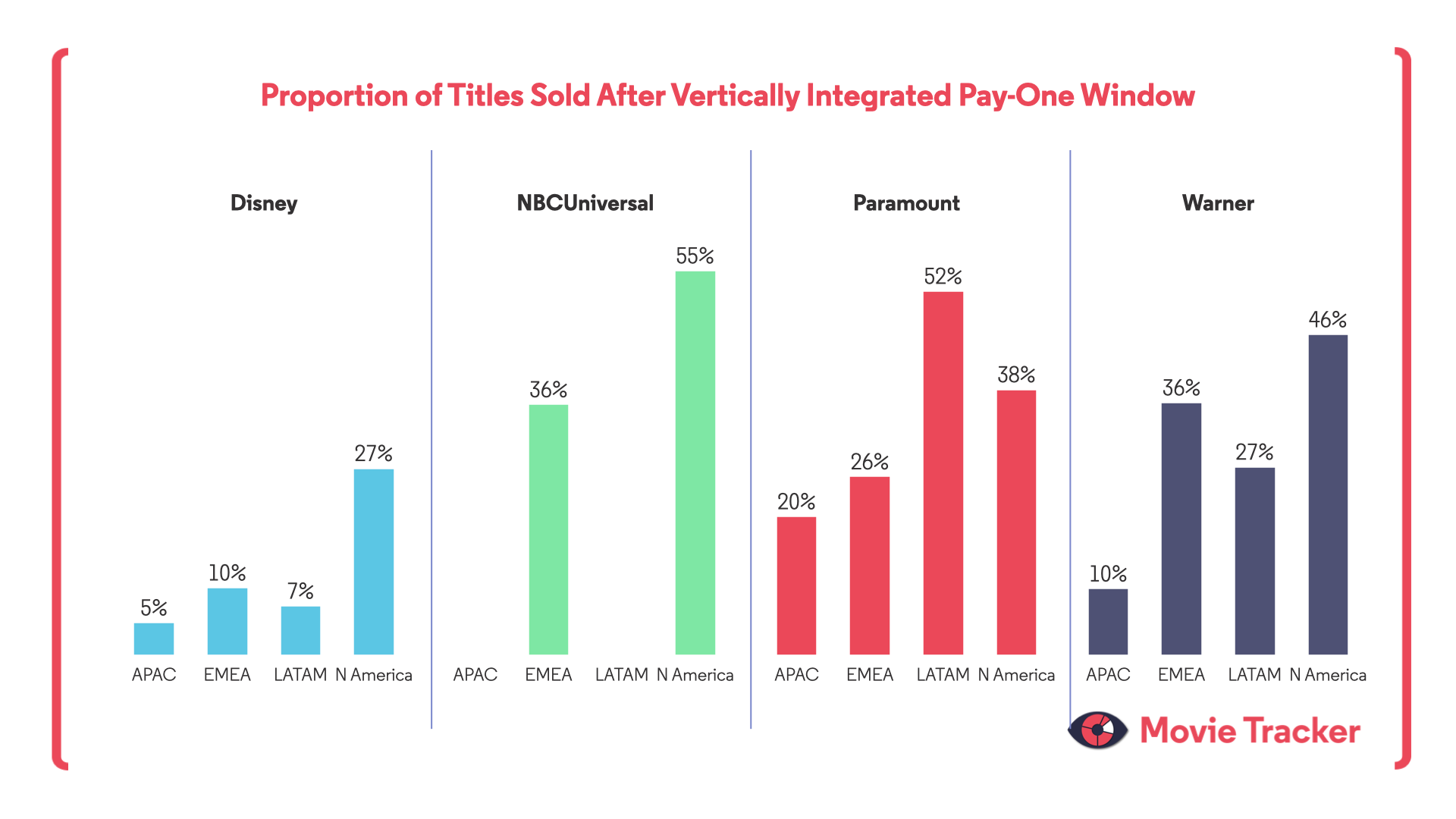Vertically integrated Pay-One deals for movies haven’t ended traditional licensing. Several studios continue to sell titles into second windows - particularly in North America.
The latest Movie Tracker data shows that post-Pay-One activity is most concentrated in the US and Canada. NBCUniversal and Warner Bros. each resell over a third of their Pay-One titles in these markets. Disney is more selective, selling only 27% of titles in North America and showing minimal second-window activity elsewhere.
There are clear patterns in who buys what. After Disney+ exclusivity, Disney typically sells to Crave in Canada and Amazon Prime in the US. Warner titles, having premiered on Max, often go to Netflix in the US. NBCUniversal titles appear on Amazon following Peacock, except in the case of animation, which tends to go to Netflix. Paramount resells to both Netflix and Amazon in Canada. In Latin America, Paramount relies heavily on Netflix for second-window placement in both Brazil and Mexico.
Paramount also stands out for its international reach. It’s the only studio pursuing significant second-window sales across all tracked regions. In Latin America, 52% of its titles move to a second window - far ahead of its 38% in North America.
By contrast, NBCUniversal skips APAC entirely. The reason is structural: without the ability to vertically integrate in those markets, there’s no first-window base to build from/
The picture is far from uniform. Some studios favour tight control of rights and exclusivity. Others are more commercially flexible, looking to maximise content value through third-party sales after their platform window ends.
Second-window licensing may no longer be an assumed inevitability - but it remains a valuable revenue generator for high-profile titles. Vertical integration hasn’t closed off the second window for movies, but simply made it more selective.























.svg)



